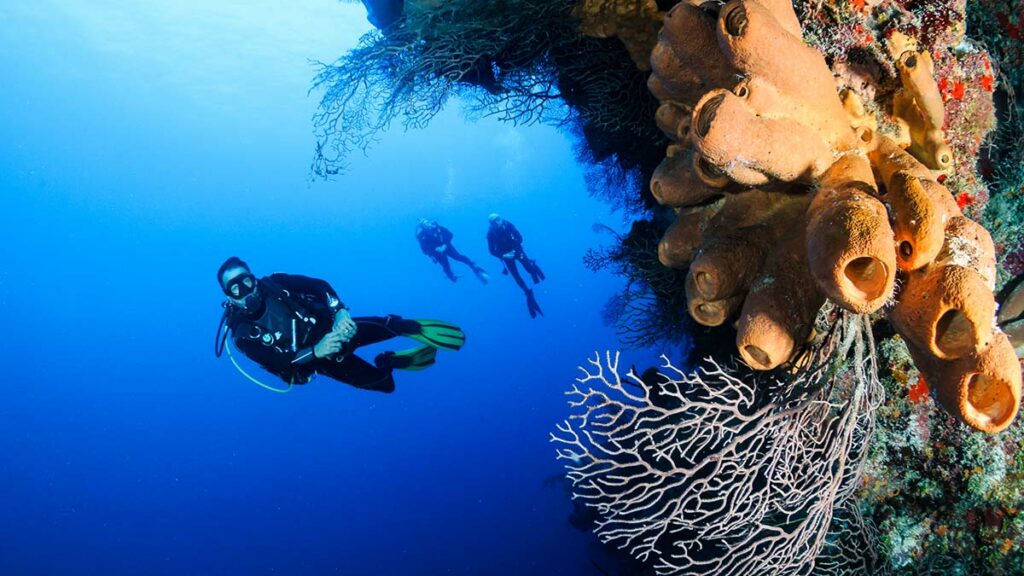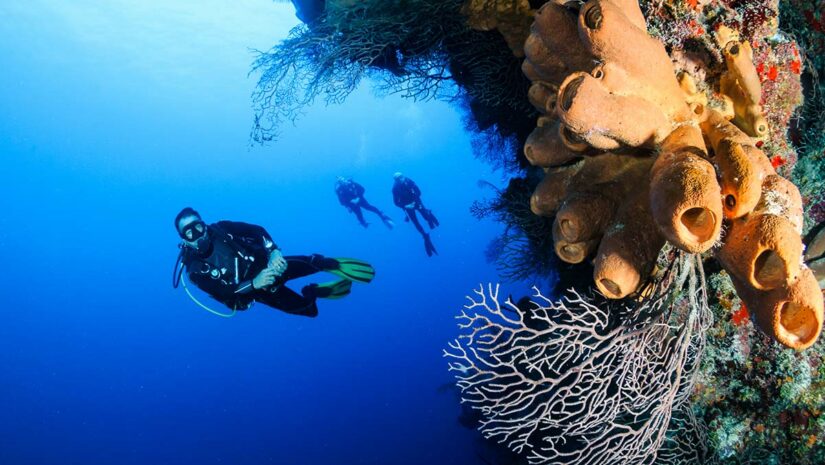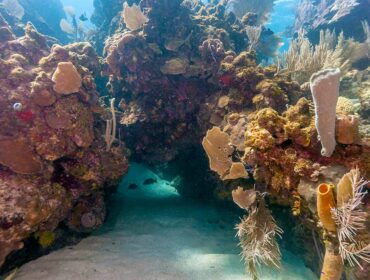What is it about wall diving that has divers completely enthralled with the activity? The fascination for wall diving is difficult to explain, anyone who has dived a reef wall will rave about the experience and most dive operators will always feature their wall dive as one of their top dive sites and promote them excessively.
What is wall diving?
A Wall in scuba terms is essentially an underwater cliff face, more commonly a reef edge that runs vertically, usually run from shallow to deep and drops off suddenly into the depths of the ocean. Diving along this vertical reef/rock edge is called wall diving. Most coral Islands and barrier reefs like Australia’s Great Barrier Reef and Belize’s Barrier Reef have stunning wall drop-offs teeming with coral and marine life.

Why divers love wall diving
It’s an advanced style of diving
So what’s all the fuss about diving along a reef cliff? Well for starters, wall diving is best for more seasoned divers, as they can often be rather challenging to dive making them more exciting. A wall dive usually implies a deep dive, as walls drop off suddenly to great depths.
It forces you to work on buoyancy control
Secondly, diving along the face of a vertical wall requires good buoyancy control because there is no seabed to prevent the diver descending too deep. Constant monitoring and depth control is crucial to diving along a wall, as a diver can easily drop too deep without even realizing it as there is no sea bed as a visual indicator of depth.
Its currents make it challenging
Thirdly, reef walls usually have strong upward or downward currents running along the wall as the current from the deep hits the vertical rock face and rises, making it extremely challenging to navigate and swim which adds to the challenge and the difficulty for novice divers.
You’ll appreciate the coral and marine life
Fourthly, wall diving meets just about every type of diver preference from spectacular vistas, abundant marine life ranging from smaller reef fish near the top to larger pelagic fish such as Sharks, jacks, grouper and tuna around the depths. Corals grow at interesting angles creating a kind of three dimensional gardens as they struggle for light on the vertical overhangs. A wall offers a wide variety in dive profiles, exciting visual/physical sensations, and tremendous opportunities for the underwater photographer, as all sorts of fascinating creatures live along a reef wall, and if you are a macro photographer, you will have no end of interesting subjects to capture. Exploring tiny nooks, crevices to larger caves and overhangs is always interesting, and simply observing the change of marine life as you descend along a wall is a real eye-opener.
The sensation of being suspended in the ocean with only one supporting wall while all the larger fish of the ocean and their predators darting below you, will give any diver a rush.
Conclusion
If you’re planning to dive a wall, make sure you plan your dive well, and know the strength and direction of the currents along the wall. Plan a multi-level or profile dive to maximize your bottom time and observe the different levels of marine life as you change depths. Always remember to watch that depth gauge! Wall dives are deceptively notorious for having divers drop below their limits, as currents constantly pummel divers who have no sea floor as a reference. Be mindful of the fragile coral growing along the vertical. Watch where you grab, as there are often several creatures hiding in the cracks and crevices along a reef wall.



